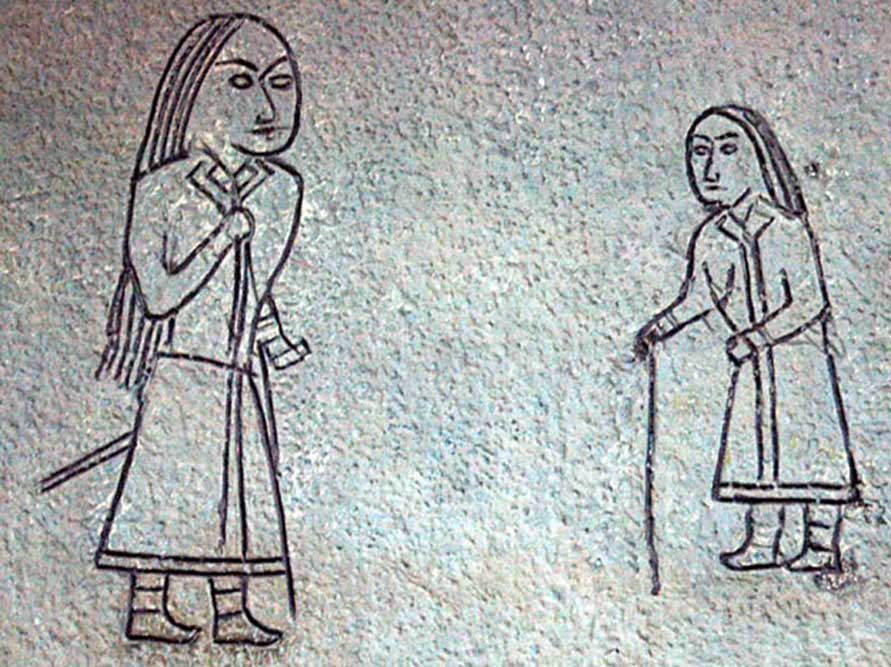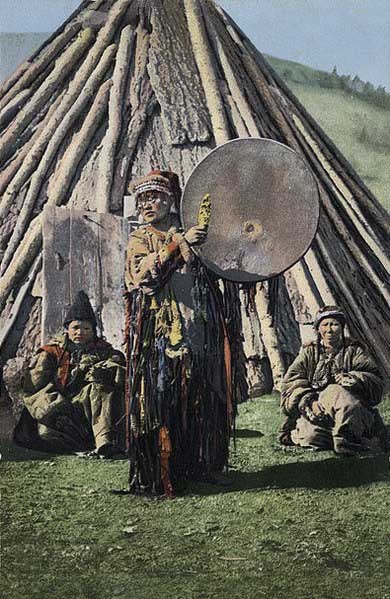
The Tapestry of Early Turkic Myth is Woven with Tales of Wolves, Horses and a Great Tree of Life
Turkic peoples comprise a variety of ethnic groups living in northern, eastern, central and western Asia, northwestern China and some parts of eastern Europe. Historically they were established in China after the 6th century BC. Early Turkic people were nomad tribes who were dependent on their environment and trekking - reflected in their unique mythology and religious beliefs. Mirroring the landscape they dwelled in, their spiritual world was also inhabited by wolves, horses, lone trees and a clear blue sky.
Nature and movement impacted not only on their ability to survive and thrive, or not, but also in creating a rich tapestry of cultural beliefs and a unique worldview. It seems that there was no religious consensus amongst ancient Turkic tribes, but the most popular of the belief systems associated with these groups is Tengrism. Some scholars argue ancient Turkic beliefs also included elements of Zoroastrianism, Manichaeism and Buddhism; probably due to their nomadic lifestyle putting them in contact with these and other cultures. The varying ideologies that were met combined to create a one of a kind perspective of the world and humanity’s place in it.

Göktürk petroglyphs from Mongolia (6th to 8th century AD). (Public Domain)
Tengrism and Religious Scripture
The origins of Tengrism have been traced to the Central Asian steppes, where it was popular amongst ancient Turkic and Mongol tribes. This is a non-dogmatic belief system that includes elements of shamanism, totemism, animism and ancestor worship. Kök Tangri (kök meaning both ‘sky’ and ‘glory’) was the creator and sky-god of the ancient Turkic people – a being that is unknowable, infinite and timeless. Demigods or spirits of land, water, earth and the underworld also exist in Tengrism, as well as the spirits of ancestors - which serve as guides. Spirits are thought to live in one of various domains, in heaven/above, on earth or in the rivers, or in the underworld. Tengrism stresses the importance of harmony with nature – people who live moral and environmentally conscious lives would be cared for by Tengri and some helpful spirits. The sky, earth, water, trees and mountains have all held mystical importance and been revered as well.
Unlike the sedentary focus on having a bountiful agricultural harvest, nomadic Turkic tribes often used religious rituals as attempts to ensure success in hunting and breeding livestock. Thus, shamans were special members of society – these were the people believed to have the ability to interact with both the human and the spirit world. Shamans were looked to for healing, divination, conversing with ancestor spirits, manipulating the environment and leading lost souls to their destination. Despite these powers, some scholars argue shamans were not the leaders of ancient Turkic religious life or society. Prayer was also believed to be an individual practice – not something reliant on a shaman or others.
Shamanic rituals may have involved trances, drumming, dancing, chanting, elaborate costumes and displays of the shaman’s strength. Shamanic ability was considered hereditary and both men and women were shamans.

Example of an Altai shaman with a drum. (Public Domain)
The earliest examples of Tengrist scripture are written in the Orkhon Script, an Old Turkic script (sometimes referred to as “Turkic runes”). Few examples of the scripture have survived the passage of time, but oral tradition has kept many aspects of the old religious beliefs alive.




